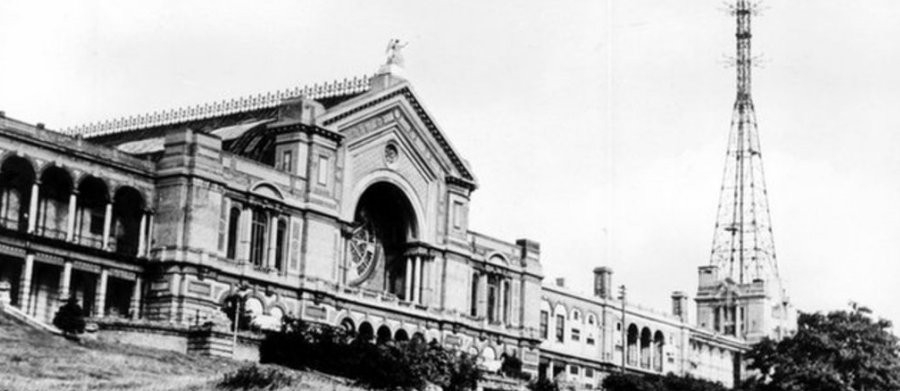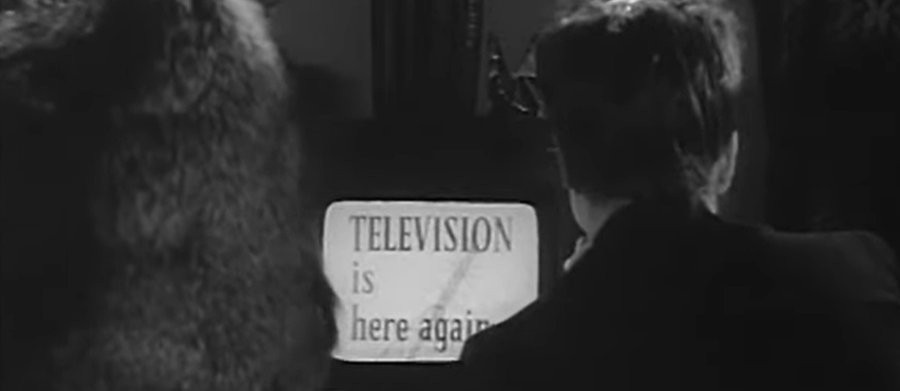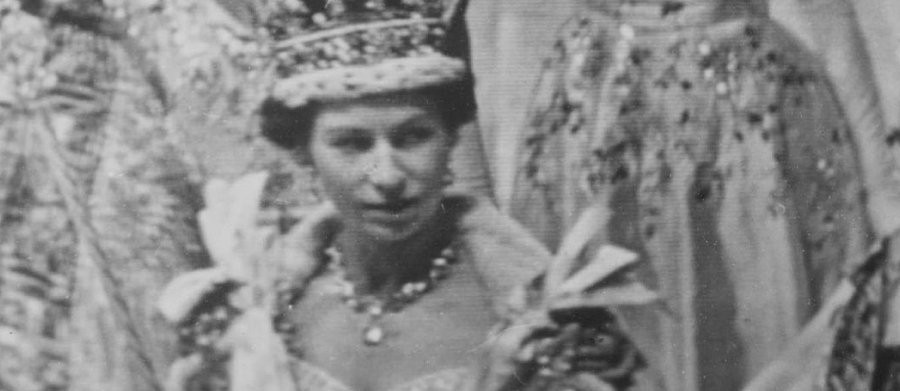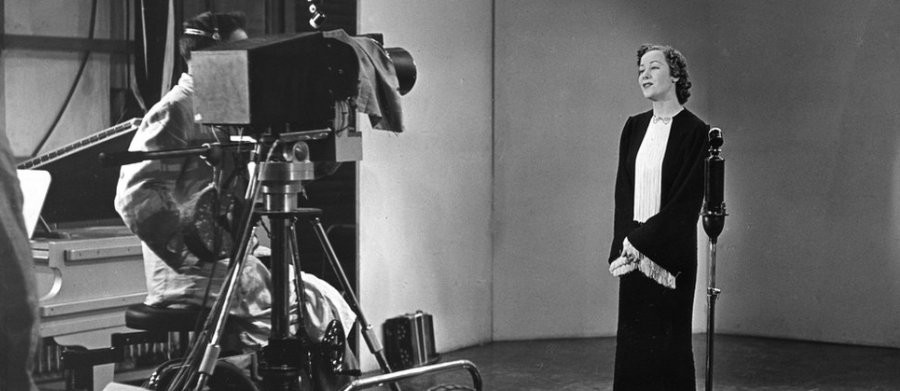
History of the BBC: The First Television Era
On May 18 1922 the Post Office met representatives of eighteen companies, each with a single purpose in mind. Until now officialdom had refused permission for regular broadcasting of radio transmitters in Britain, worried that they would interfere with essential services such as the armed forces. However, by 1922 public opinion, as well as the spectacular growth and popularity of radio in the United States, had bought too much public pressure on the authorities to deny a full service any longer. After five months of deliberation a company to be known as the British Broadcasting Company was to set up eight stations in major cities around the country. Thus the BBC was born.
The British Broadcasting Company started daily transmissions on November 14th 1922, by which time more than one million ten-shilling (50p) licences had been issued. In 1927 the company was restructured as a public corporation -the BBC that we know today- by its founding father, John (later Lord) Reith, but by this time an even newer technology was being developed -television.
In 1923 the Scotsman John Logie Baird began developing a system by which television would be made possible. Baird wasn't the only one developing this new system at that time; indeed, Earl Ferdinand Braun had invented the first commercial cathode ray tube as early as 1897. But it was Baird who developed the disc-scanning equipment that made television possible. In 1926 Baird enlisted the aid of Selfridges in London to put on public demonstrations of his equipment. In 1928 those amazed shoppers in the London department store were being invited to place orders for Baird's Televisor, with prices ranging from £20 to £150, on the understanding that they would be delivered as and when a service became available. However, the BBC's official line was that Baird's pictures were well below standard and that they had too little potential for improvement.

In truth, the Corporation was very interested in Baird's experiments and wanted them to continue under their sponsorship, and not under that of any other company. Accordingly, Baird's company was offered the use of facilities on London's South Bank. By 1932 the BBC were sufficiently happy to allow regular experimental broadcasting. They now offered Baird a studio in their newly acquired premises in Portland Place, W1. Studio BB, Britain's first dedicated television studio, was housed in the basement of Broadcasting House, and it was from here that Baird continued to experiment and refine the new medium. Competition came from the Electronic and Music Industries (EMI), based in Hayes, Middlesex, where they had been working with the Marconi Company on developing a high definition system.
In May of 1934 the British government appointed a committee, under the guidance of Lord Selsdon, to begin enquiries into the viability of setting up a public television service, with recommendations as to the conditions under which such a service could be offered. The results of the Selsdon Report were issued as a single Government White Paper in January of the following year. The BBC was to be entrusted with the development of television, which had to transmit a definition of not less than 240 lines with a minimum of 25 pictures per second. With the publication of this report the era of the low definition picture came to an end with ballerina Lydia Sokolova being the last artiste in Britain to appear via the old 30-line system.
The committee proposed that the two new high definition systems (Baird's 240 line and Marconi-EMI's 405 line) would be chosen to alternate transmissions by the BBC over a set period, until it was decided which was the better. Looking for a suitable site for the new service, the BBC chose Alexandra Palace in Haringey, Greater London. Its position, high on a hill, made it the ideal place to place a transmitter that would cover all of London and many of its surrounding counties.
Sanctioned with the monumental task of bringing high-definition broadcasting to the British public as a regular service was Director of Radio Outside Broadcasting, Gerald Cock, now appointed the BBC's Director of Television. Cock's first task was to assemble a team of experts and then summon them to a meeting where a plan of strategy could be worked out. The team comprised of experienced stage designer Peter Bax (appointed studio manager), Cecil Madden, a playwright with more than half-a-dozen West End productions to his credit (appointed programme organiser), Stephen Thomas, Douglas Bower and Harry Pringle (appointed producers), Cecil Lewis, film cameraman Bill Barbrooke, George Moore O'Farrell and Mary Adams. In front of camera was to be experienced Movietone News commentator, Leslie Mitchell, and female announcers Jasmine Bligh and Elizabeth Cowell were chosen from thousands of hopefuls who had applied for the job. According to popular legend Cock assembled his staff and told them that since none of them knew a thing about television broadcasting, he was going to give them ample time to find out. They were given four months to study the new medium and do all the experimenting they needed in order to get it "right on the night". The meeting came to a close and each new member of the BBC staff returned to their respective offices. As Madden returned to his the phone was ringing. It was Cock.
"Wash out everything I said."
"What?"
"We've been asked to provide television for Radiolympia."
"But - that's only ten days away!"
"That's right, old chap, you'd better get cracking!"
"Good afternoon, ladies and gentlemen. It is with great pleasure that I introduce you to the magic of television..."
With those words Leslie Mitchell introduced Britain's first high-definition public television programme from Radiolympia. The date was 26 August 1936.
Ronnie Hill wrote a song for Helen McKay to sing called Here's Looking at You, which also became the title of the show. Acts booked to appear were a performing horse named 'Pogo', The Griffith Brothers and Miss Lutie, The Three Admirals and the Television Orchestra, which had been hurriedly put together by Hyan Greenbaum. Baird and EMI transmitted the show from the studios to Olympia on alternate days. An estimated 123,000 visitors got their first glimpse of television in the viewing area at the show, with many more seeing it at Waterloo Station, which had been equipped with sets. The team had indeed been given a chance to do their experimenting. They just had to do it in front of a live audience...
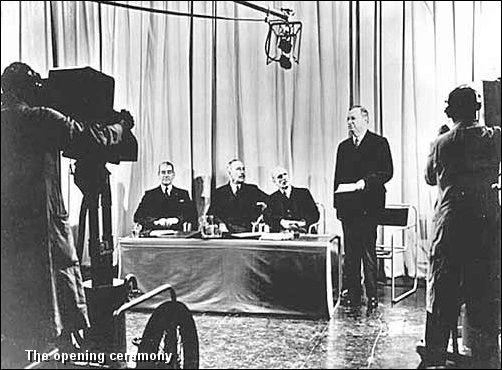
On November 2nd, 1936 the world's first regular high definition service began transmitting to the 100 or so TV sets available in Britain. Sir John Reith, who was to resign from the BBC two years later, had little enthusiasm for the new medium, noting in his diary, "To Alexandra Palace for the television opening, I have declined to be televised or take part..." With Reith's approval or not, the BBC began transmitting from Alexandra Palace for two hours every day (except Sunday's). A copy of the Radio Times dated October 30th reveals the opening day line-up. According to the publication, on this particular week the Baird System was being used.

If you think that we get too many repeats on TV these days, it's interesting to note that Television Comes to London was shown no fewer than 3 times between Monday and the following Saturday. It's not unfair to say that this particular programme was the first 'fly-on-the-wall' documentary, as it was made to show viewers the growth of the television installation at Alexandra Palace and give 'an insight into production routine.'
There were many behind the scenes shots including one of Adele Dixon as she prepared for her performance in Variety, shown earlier in the day. It seems that even in these early days television producers were fascinated by making television programmes about making television programmes. British Movietone supplied the daily and nightly news throughout the week and there were programmes featuring a display by champion Alsatians from the Metropolitan and Essex Canine Society's show, musical presentations including a 'special' starring Bebe Daniels and Ben Lyon, and a description by a bus driver, L.A. Stock, of how he constructed a model of Sir Francis Drake's famous ship, The Golden Hind. Heady stuff indeed! The entire week's programming output was given a budget of £1,000.
The range of the service offered by the BBC covered a radius of approximately 40 miles from Muswell Hill, although that was by no means a rigid limit. Some people reported picking up pictures from beyond that range although it seemed to depend on a mixture of freak conditions and which transmission system was being used at the time. But even in those early days it seemed to many that Baird was losing the race to have his system chosen as the definitive one, and on one fateful night the TV inventor's world came crashing down around him. On 30th November, following the final transmission of the evening, a group of BBC staff were leaving Alexandra Palace when they noticed a red glow lighting up the night sky south of the river.
"Oh, God, no!" One of them said. "It's the Crystal Palace!"
Within an hour, the famous London landmark, which housed every piece of Baird's television equipment, was burned to the ground. John Logie Baird was effectively out of the television business. It took the Postmaster General three months to confirm Baird's fate by announcing that the Television Advisory Committee had recommended termination of the dual-transmission period, and that a single standard -Marconi EMI's, would be adopted. On Saturday 13th February 1937 viewers watched the last Baird programme; A Half Hour of Variety.

The next landmark for the BBC came one month later, 12th May 1937, when cameras were sent to cover the Coronation of King George V1. This was not the BBC's first outside broadcast. On 5th September the previous year (almost two months before the opening night), comedian Leonard Henry who had been visiting Alexandra Palace, was preparing to leave when Gerald Cox, quite spontaneously, said to cameraman Cecil Lewis, "Bring your camera out onto the terrace." The camera was wheeled out and Henry was filmed getting into his car and then driving off. Only when his car was out of sight did it dawn on Lewis the significance of the occasion. "Blimey," he said, "We've just made an OB!" So, by the time the Coronation came around BBC technicians were old hands at this type of thing and had nothing to fear, right? Wrong! Apart from the fact that this was a major historical event, the day had begun with blustery showers and at times very poor visibility. A few minutes before three a breakdown occurred and the technicians, who had planned for this sort of thing, switched over to a second channel. It too had broken down. With the transmission time now upon them and no pictures to broadcast, the technicians worked furiously (and one imagines in no small state of panic) to locate the fault. Luckily for them, EMI's Eric White located the problem and at three minutes past the hour viewers were able to see the figure of Freddie Grisewood as he introduced the programme in apologetic tones for the poor quality of the picture. However, the pictures quickly improved and viewers as far away as Ipswich and Brighton were ringing Alexandra Palace to say that they had received good vision.
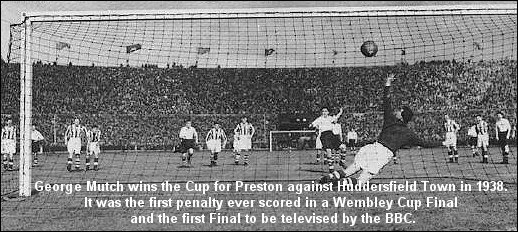
Following this, viewers got their first chance to witness a major sporting event when the Wimbledon Tennis Championships were first broadcast on June 21st, 1937, with a match between Bunny Austin and George Rogers. Freddie Grisewood commentated. The BBC sent three vans -a scanner with the camera's, a van housing the transmitter and another with a generator. However, the coverage was completely overshadowed when the cameras swung round to capture Queen Mary entering the Royal Box.
The Boat Race (April 2nd, 1938) and the FA Cup Final (April 30th 1938) and Test Match cricket (June 24th 1938), were also available to viewers in the comfort of their own homes for the first time. The next truly historic occasion to be broadcast on television occurred on September 30th, 1938 when Richard Dimbleby was at Heston Airport to report for both radio and television on Prime Minister Neville Chamberlain's return after his historic Munich meeting with Adolf Hitler. It was here that Chamberlain made his "peace in our time" announcement. A year later Britain was at war with Germany.
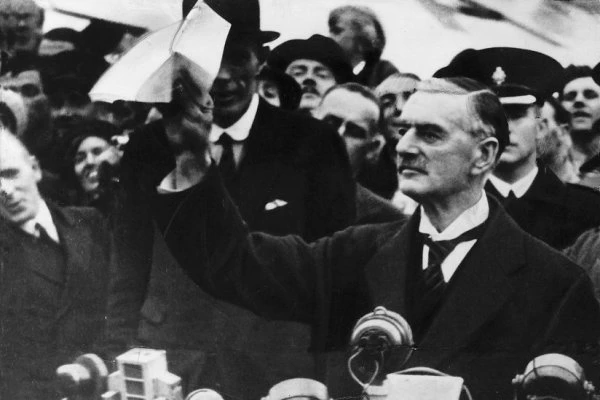
By now the corporation were taking great strides in television development. Not only were there improvements in picture quality with the introduction of EMI's Super Emitron, but also there were bolder drama productions and more confident programme making. Clive of India broke new ground when W. P. Lipscomb used camera controls that enabled him to use slow, medium and fast panning shots. He also used a montage sequence, employing no fewer than six cameras -three of them on 'live' action, two scanning films and one on the caption board. By 1939 programmes were being broadcast seven days a week from Alexandra Palace -which Gracie Fields had nicknamed 'Ally Pally'. There were 23,000 licences and the television industry now had its own slogan. "You can't shut your eyes to it." Predictions were made (not unrealistically) that by Christmas there could be as many as 80,000 receivers in use.
Then on 1st September 1939, the screens went blank. Viewers waited for an announcement, but none came. Britain and the BBC were about to go to war, and the first television era had come to an end.
Related Articles: Ally Pally's Secret War - Back After the War - The 1953 Coronation
This article was first published on Television Heaven's companion site Teletronic. A much fuller account of the BBC's early days as well as a comprehensive history of television can be found here.
Sources
The Setmakers by Keith Geddes | Baird of Television by Ronald F. Tiltman | Television by Burton Graham | This Is Television by Kenneth Baily | Guiness Book of TV Facts and Feats
Published on January 3rd, 2020. Written by Laurence Marcus for Television Heaven.


